There are many uncertainties in life. Some questions will go forever without response, while others take approximately five years to get their answer. Such is the case with Persona 5 Royal. The original Persona 5 released in 2016, with its Royal update following three years later. Three more years and we finally have the answer to a question we’ve been asking since Nintendo launched their latest console: “Will Persona 5 ever come to the Switch?” Thankfully, that answer is a resounding “yes.” In more good news, all previously released DLC is included with your purchase, so you’re getting the full Persona 5 Royal experience. The game itself is nothing new, but as someone who only played the original Persona 5, I was very much anticipating the release of Royal on the Switch. I was going to comment on preparing our Navigator Apps, but then I went off on a tangent when I realised the cast could play their own game anywhere now, and everything got a bit fourth-wall. Let’s get started.
Persona 5 Royal greets you with its abundance of style from the moment you boot up the game. It’s easy to see why the series is so well-known for its sense of style, with even the SEGA logo as part of the Shibuya cityscape. You are then treated to an explosion of colours and abstract character vignettes in the game’s animated opening cutscene; a chance to absorb the forthcoming narrative and aesthetic motifs. Updated for the Royal version, both in its visuals and with a new song by series composer Shoji Meguro, there’s some stunning imagery conveyed here. Haven’t we all wanted to walk through the streets of Shibuya, our bodies scaled up to Kaiju scale, and use baseball bats to smash buildings with our friends? As someone who played the original Persona 5, I really appreciate this subversive take on the game’s themes.
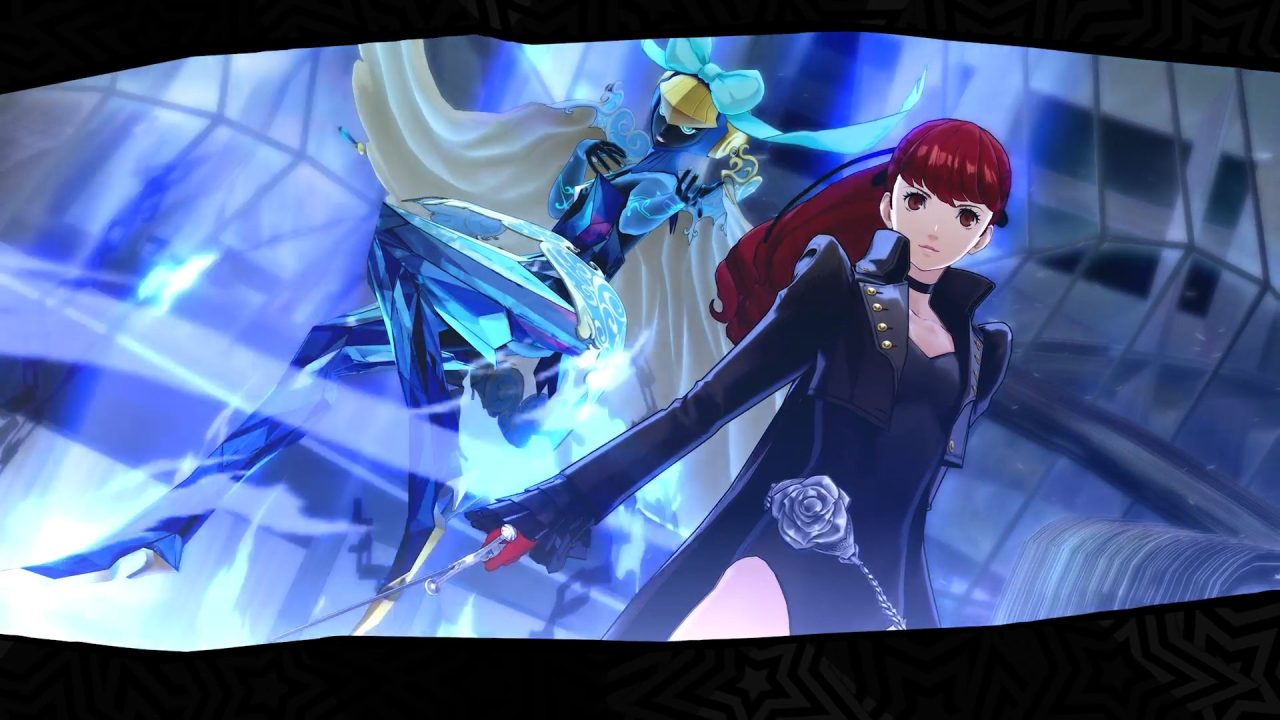
Starting the game proper, you are thrown straight into the action, with the main character escaping a heist. He’s dressed in quite the costume — trench coat and opera mask — and the environment seems to merge fantasy with reality. Initially, the scene lacks context, but things move along at a snappy pace, and uhm… you get arrested. Here, we can name our protagonist, in the form of him signing a confession. He has no default name, but if you want to go by the canon anime, it’s Ren Amamiya. You’re welcome. And thus, our story begins, framed as Ren recounting the events leading up to that moment. It’s very effective, giving you an immediate taste of what’s to come and suddenly bringing everything back to reality as Ren starts his new school life at Shujin Academy.
The game is a bit of a slow burn in its first few hours, but not unnecessarily so. Many story beats are carefully set up to ensure no detail is lost, and the gameplay loop becomes entwined in the narrative. Aside from the main story route, there’s a lot to do: developing your Social Links with friends, building your Social Stats (such as Charm and Knowledge) through extracurricular activities, and working part-time for cash. It might sound a tad overwhelming, but the pacing between each new element’s introduction gives you room to breathe. If you prefer a little extra guidance, there’s a handy online system showing you the activity statistics for players around the world. I never had any issues deciding what to do next, but it’s definitely handy if you don’t know which Social Links are available on any given day.
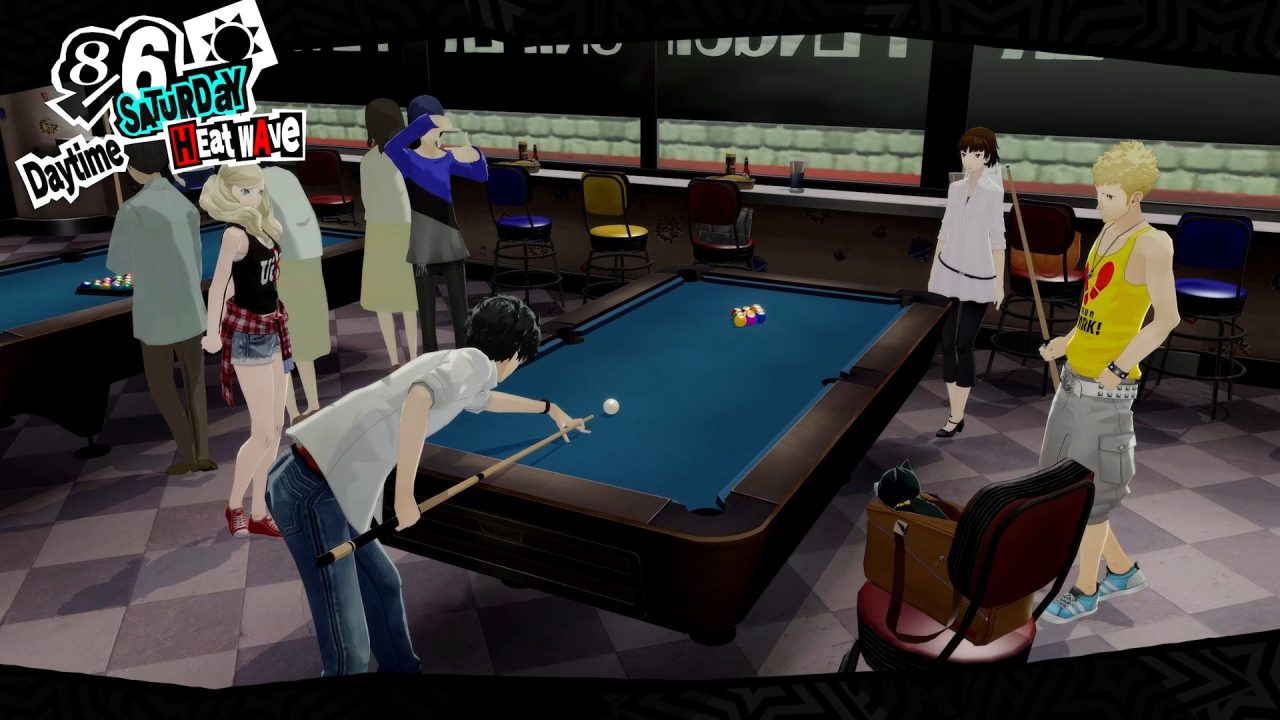
Each of these separate activities are assigned a time of day, usually After School or Evening, and you can only do one task per time slot. The calendar is directly linked to the story, with a deadline for each main objective. This means you’ll need to efficiently balance Ren’s social development (clearly something from a work of fiction) with how much time you spend in the story dungeons. Again, this pacing is gentle at first so you can find your feet. As more options become available, you can try to clear story dungeons in one sweep. This is very much doable—especially with some of the DLC accessories that aid with HP and SP restoration—but can still require careful planning beforehand. Realistically you can spend as many in-game days as you want in dungeons so long as you meet the deadline, but you are likely to opt for as much free time as possible to develop those precious Social Links.
Social Links directly affect the game’s namesake feature: Personas. As you meet new characters to join your party, they’ll each acquire a “Persona,” a reflection of their inner desires and rebellion made manifest to grant them strength. Social Links are important as they grant a slew of benefits (some that affect Personas) for exploring the Metaverse, Persona 5 Royal’s alternate-reality dimension, from new combat abilities to useful items becoming available. Each Social Link is tied to a specific character. These aren’t restricted to just the characters who can join your party; most of them are supporting characters and become known as your Confidants.
Confidants have a corresponding “Arcana,” named after the Major and Minor Arcana in a deck of Tarot cards. For example, Tae Takemi is aligned with the Death Arcana, and each level you gain with her Social Link will grant bonus experience points when fusing Personas of the Death Arcana. It might sound confusing if you’re new to Persona, but these intertwining systems give everything some meaningful synergy. The Confidant stories are also very engaging, with two extra ones added for the Royal version of the game. Before playing Persona 5 Royal for Switch, I had only played the original Persona 5 for PS4, and I think Atlus did a great job of adding in this extra content without disrupting the flow.
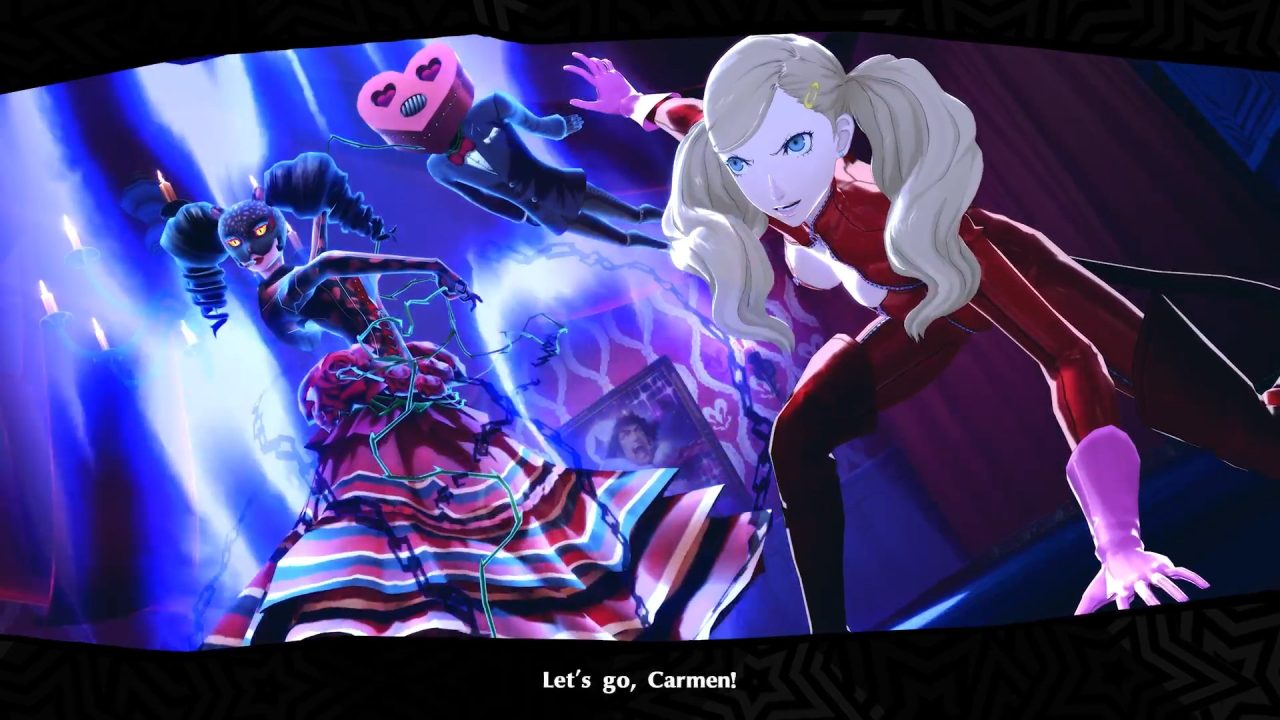
Personas will be familiar to anyone who’s played Persona 3, Persona 4, or even any of the Shin Megami Tensei games. The Personas are all based on creatures from folklore, mythology, religion, and SMT-original demons. The first few characters you meet all have Personas drawing inspiration from works of literature, such as Captain Kidd, Zorro, and Carmen. I enjoyed this quirk, as the game goes quite deeply into how the Metaverse is a person’s cognition in physical form. As high school students, it would make sense that your party is aware of these literary characters, who are mentioned throughout class segments. The theme continues with party members who join later in the game alongside Personas based on real-world figures.
Protagonist Ren’s days are far from boring, and with so many day-to-day objectives, it’s very satisfying to see all of the elements coming together when exploring the Metaverse. As I mentioned earlier, the Metaverse is Persona 5 Royal’s alternate dimension of choice, succeeding the Dark Hour in Persona 3 or the Midnight Channel in Persona 4. Metaverse locations come in two different formats: Palaces and Mementos. Palaces are where the main story segments play out, while Mementos is a more traditional Tartarus-esque procedurally-generated dungeon crawl.
Palaces are locations born from a person’s distorted desires; a representation of how a particularly twisted individual sees the world around them. I’ll refrain from later spoilers, but the first Palace you’ll visit is actually a castle. It takes that form because the person it was born from, a school teacher, sees himself as a king and the school as his castle. The team really flexes their creativity in other Palaces, giving each location a fresh environmental theme while also ramping up the complexity and difficulty. I never got bored exploring a new Palace, but Mementos is slightly less impressive. It makes sense; Mementos is a pivotal area in the game, but it came into being from the collective cognition of Shibuya’s citizens. It sprawls beneath Shibuya’s underground rail network, and thus is themed as a continuation of the tunnels. Mementos exists for sidequests and grinding, giving you a constant option for combat between the story’s Palaces.
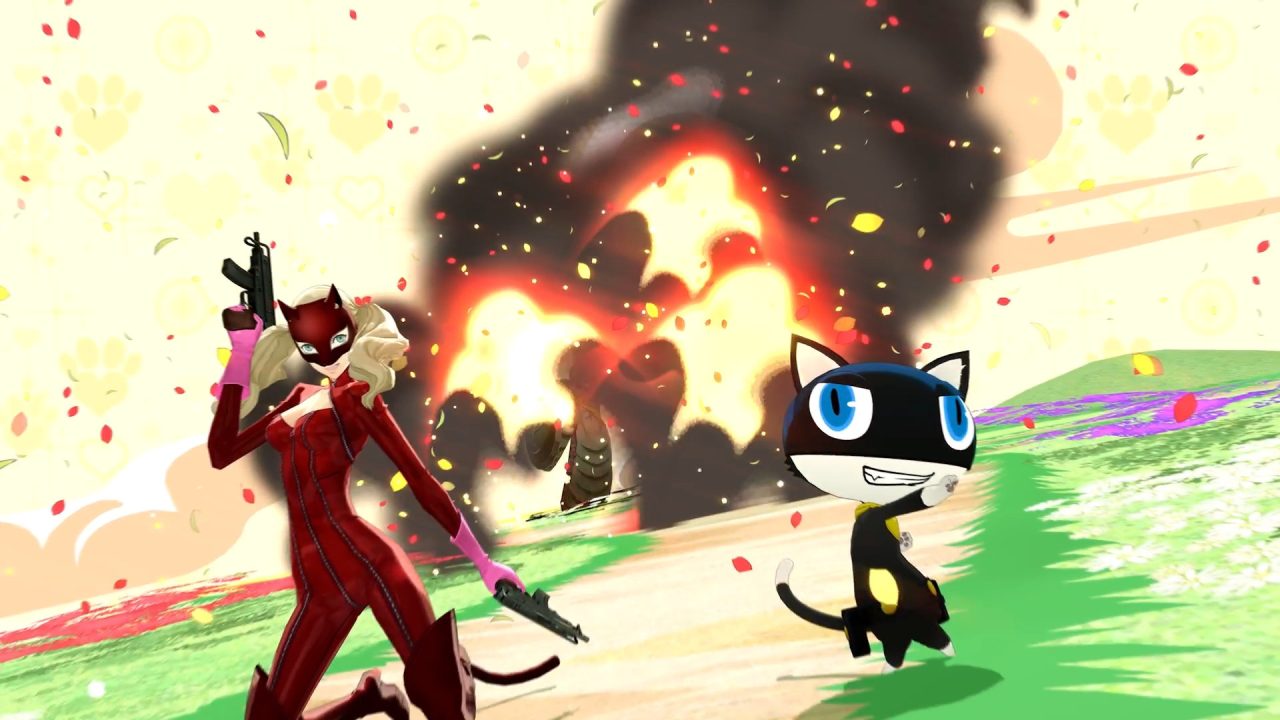
Combat will be an immediately recognisable affair for anyone who has already played a Persona or Shin Megami Tensei game. Retaining the long-standing turn-based system with its “1 More!” mechanic, battles are fast-paced and reward you for making smart decisions. Hitting an enemy’s elemental weakness will grant you an extra turn, knocking them down (a Garland reference, here?!) and leaving them open for a “Hold Up” attack. These delightfully stylised sequences see your party joining forces and act as a “finisher” after a chain of elemental attacks. Weaknesses between different enemies are varied enough to keep you on your toes. Some foes can repel certain elements, so even if a single enemy in a group has a weakness to fire, it can sometimes be disastrous to cast group-wide spells willy-nilly. Yay difficulty! There is also a huge variety of enemy types, so progressing from Palace to Palace or deeper into Mementos never feels like it suffers from Palette-Swap Syndrome.
Some of the Palaces are visually stronger than others, and Mementos’ development comes in structured integers, but I am very impressed with Persona 5 Royal’s graphical presentation across the board. I imagine a fair few of our readers are already very familiar with the game and want to see if it’s worth the double dip, so I will keep this statement simple: it is. Subjectively, of course, but I never once thought, “this is the inferior option.” I enjoy the benefits of owning a Switch OLED model, a real boon to the game’s use of bold colours and 2D art, but I imagine you’d be impressed even on a standard or lite model.
Perhaps it shouldn’t come as a surprise, as the Switch’s fidelity is somewhere between a PS3 and a PS4, but my entire experience felt buttery smooth. I didn’t notice a single dropped frame, not even in hectic battles. While I’m not a pixel counter, I do feel like the resolution is a bit lower than it would have been on the PS4, but the character models and environments still look crisp and robust. I would not hesitate for a second to recommend the Switch version over others if portability is important to you. The game is obviously not running at 4k 60fps, but it does run amazingly well, and grinding is always more palatable to me when I’m lying horizontally with some background noise on the TV.
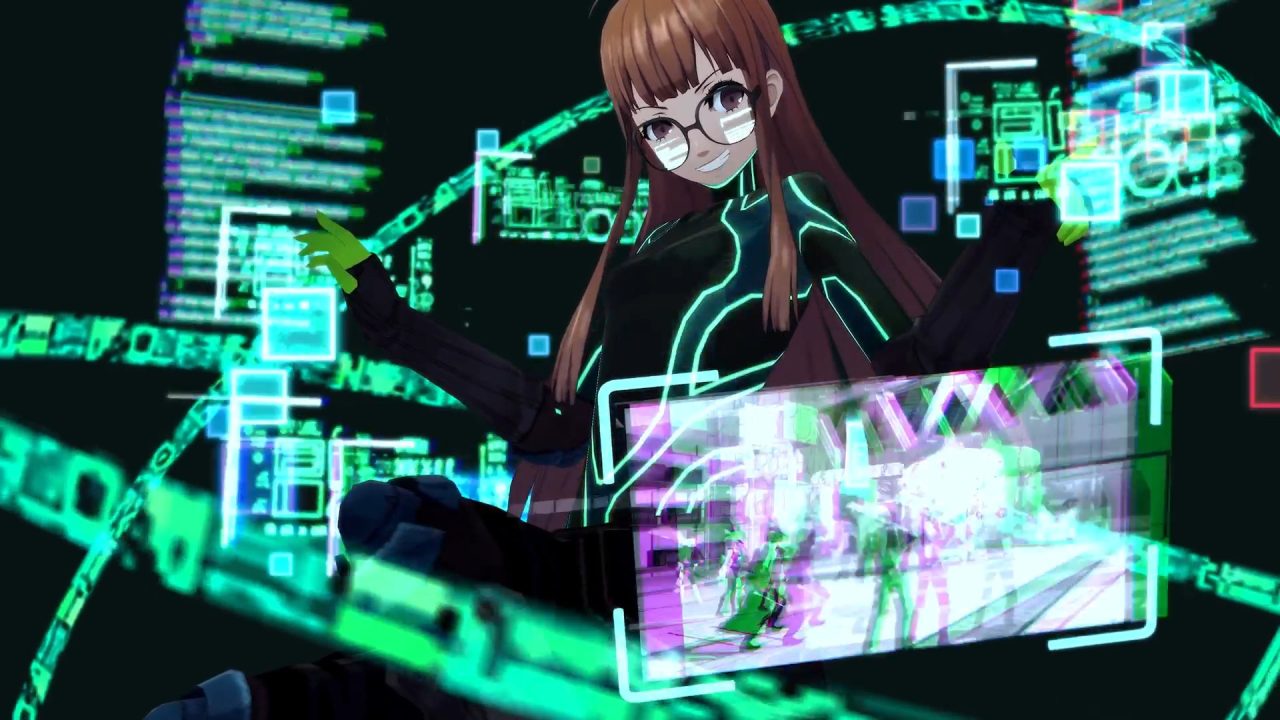
My experience with Persona 5 Royal on the Switch is exactly what I wanted. The game is of exceedingly high quality, and we’ve known that for years. We’ve wanted a portable version for a long time, especially considering Persona 3 Portable and Persona 4 Golden both came relatively quickly after their respective progenitors. It’s finally here though, and it’s an appealing release for both first-timers and returning players. Persona 5 Royal is a long game, upwards of 100 hours if you take your time, and the option to choose where exactly you spend that time is a huge plus. Games like this are responsible for many a butt-print. No more! The extra dungeon content and characters from Royal, bundled with all previously released DLC, truly make this the definitive release. Having it available on more platforms can only be a good thing. We hope this broader release shows ATLUS and SEGA that there is a huge demand for their games on more than one piece of hardware at a time.




